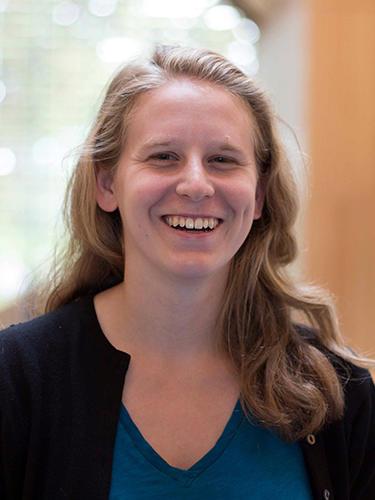Lauren N. Pincus

Lauren N. Pincus
Assistant Professor of Chemistry
Contact:
Reactions and interactions at the solid-water and solid-air interface control much of the fate of pollutants. Dr. Pincus’ research aims to examine complexation of inorganic pollutants by natural and engineered solids using advanced synchrotron spectroscopy techniques in order to understand and control the fate and transport of inorganic pollutants in the environment, develop novel sustainable and selective materials for aqueous contaminant removal, and design new technologies for climate change mitigation.
Microplastics: From Intrinsic Properties to Environmental Fate
Maryam Salehi, Lauren N. Pincus, Baolin Deng, and Catherine A. Peters. Environmental Engineering Science,DOI: 10.1089/ees.2024.0232
Lauren N. Pincus, Ajith Pattammattel, Denis Leshchev, Kewei Zhao, Eli Stavitski, Yong S. Chu, Satish C. B. Myneni2023. Environmental Science & Technology Letters, 10(6), 538-542 DOI: 10.1021/acs.estlett.3c00241
Selective Adsorption of Arsenic Over Phosphate by Transition Metal Cross-Linked Chitosan
Lauren N. Pincus, Predrag V. Petrović, Isabel S. Gonzalez, Eli Stavitski, Zachary S. Fishman, Holly E. Rudel, Paul T. Anastas, Julie B. Zimmerman 2021, Chemical Engineering Journal, 412, 128582 DOI: 10.1016/j.cej.2021.128582
Lauren N. Pincus, Isabel S. Gonzalez, Eli Stavitski, Julie B. Zimmerman 2020, Environmental Science: Water Research & Technology, 6(10), 2713-2722. DOI: 10.1039/D0EW00326C
Lauren N. Pincus, Holly E. Rudel, Predrag V. Petrović, Srishti Gupta, Paul Westerhoff, Christopher L. Muhich, Julie B. Zimmerman 2020, Environmental Science & Technology, 54(16), 9769-9790 DOI: 10.1021/acs.est.0c01666
Arsenic-bearing Serpentine Group Minerals: Mineral Synthesis with Insights for the Arsenic Cycle
Peter C. Ryan, F. Javier Huertas, Lauren N. Pincus, William Painter 2019, Clays and Clay Minerals, 67, 488-506 DOI: 10.1007/s42860-019-00040-1.
Lauren N. Pincus, Amanda W. Lounsbury, Julie B. Zimmerman 2019, Accounts of Chemical Research, 52(5), 1206-1214 DOI: 10.1021/acs.accounts.8b00668.
Lauren N. Pincus, Fjodor Melnikov, Jamila S. Yamani, Julie B. Zimmerman 2018, Journal of Hazardous Materials, 358, 145-154 DOI: 10.1016/j.jhazmat.2018.06.033.
The Green ChemisTREE: 20 Years After Taking Root with the 12 Principles
Hanno C. Erythropel, Julie B. Zimmerman, Tamara M. de Winter, Laurène Petitjean, Fjodor Melnikov, Chun Ho Lam, Amanda W. Lounsbury, Karolina E. Mellor, Nina Z. Janković, Qingshi Tu, Lauren N. Pincus, Mark Falinski, Wenbo Shi, Philip Coish, Desirée L. Plata, Paul T. Anastas 2018, Green Chemistry, 20, 1929-1961 DOI:10.1039/C8GC00482J.
Lauren N. Pincus, Peter C. Ryan, F. Javier Huertas, Guillermo E. Alvarado 2017, Geoderma, 308, 130-148 DOI:10.1016/j.geoderma.2017.08.033.
Peter C. Ryan, F. Javier Huertas, Franklin Hobbs, Lauren N. Pincus 2016, Clay and Clay Minerals, 64(5), 639-667 DOI: 10.1346/CCMN.2016.064030.
Environmental chemistry, synchrotron spectroscopy, water chemistry, green chemistry
NSF Earth Sciences Postdoctoral Fellow, Princeton University, 2021-2023
Harry H. Hess Postdoctoral Fellow, Princeton University, 2020-2021
“Central to my teaching philosophy is the goal of my students viewing green chemistry as an intrinsic component of chemistry.” --Dr. Pincus

